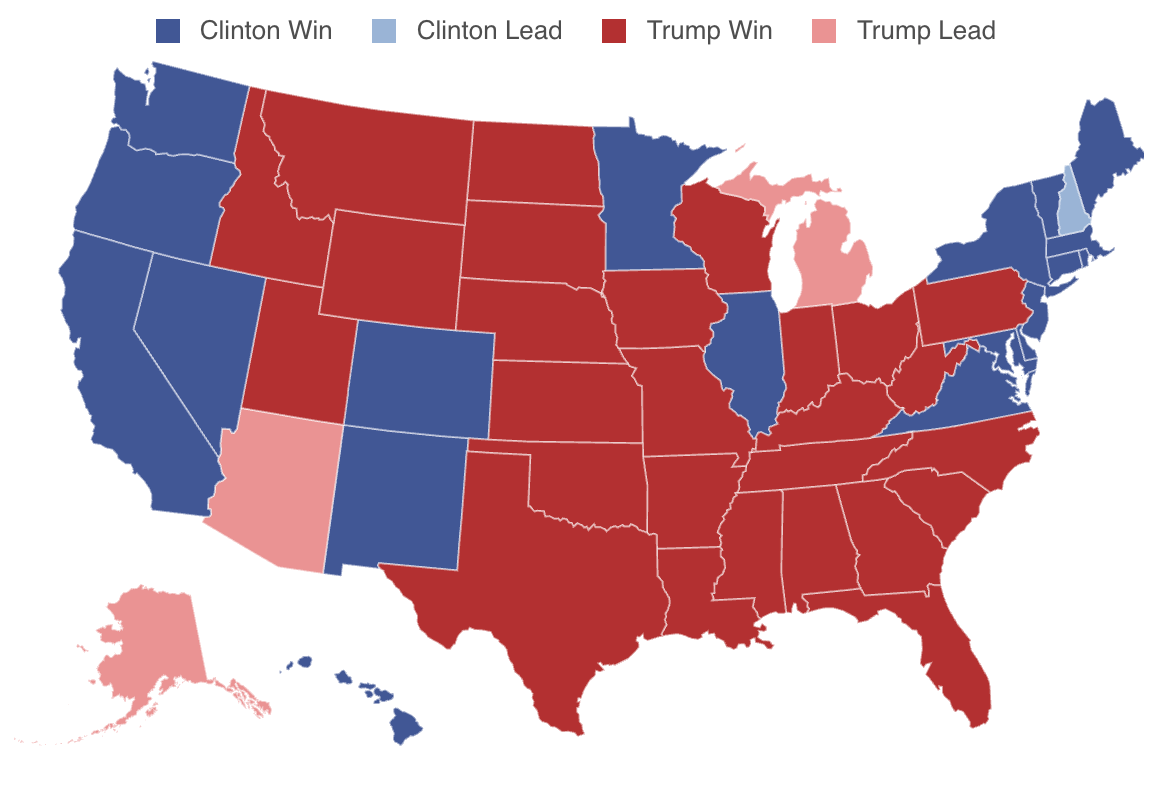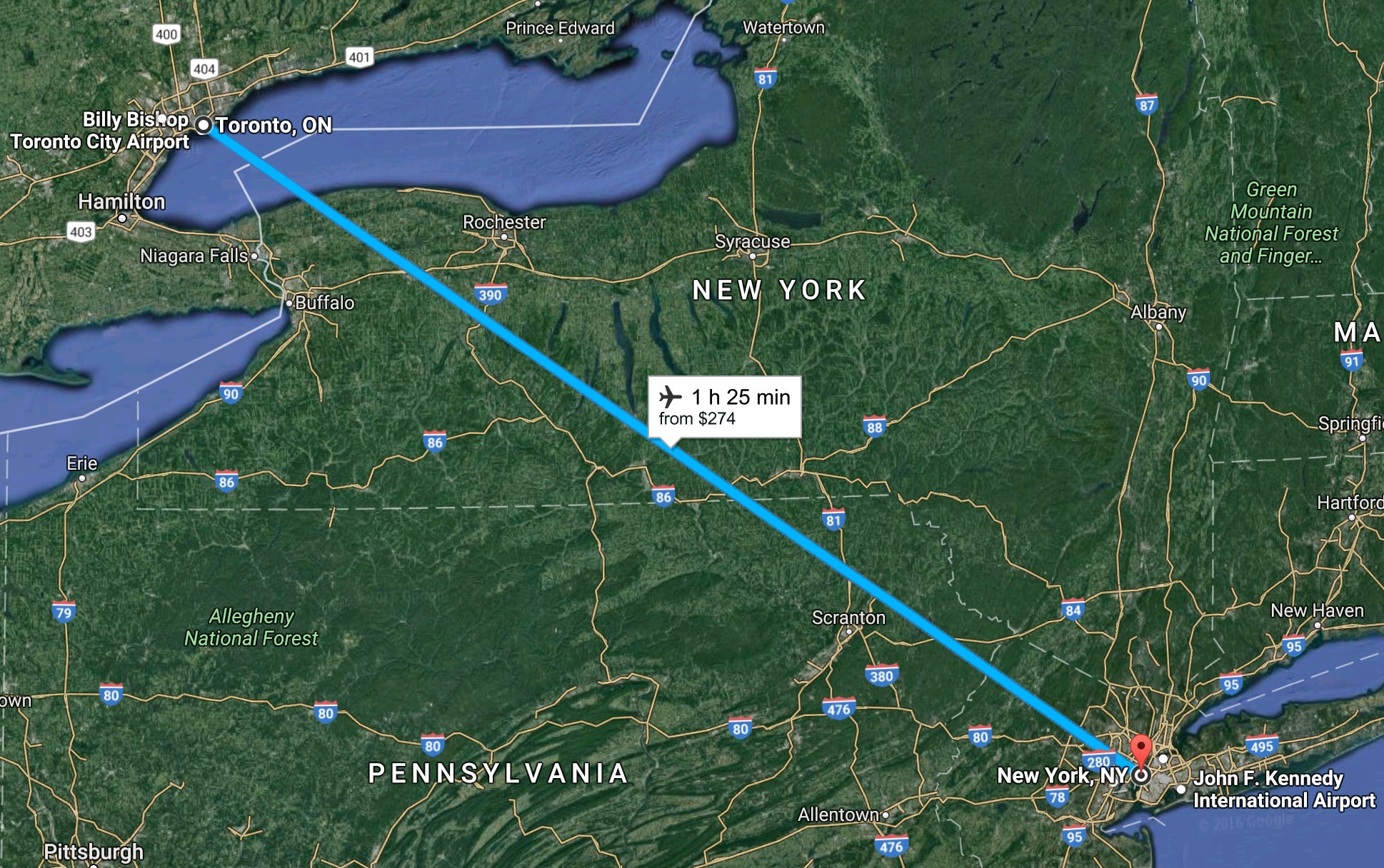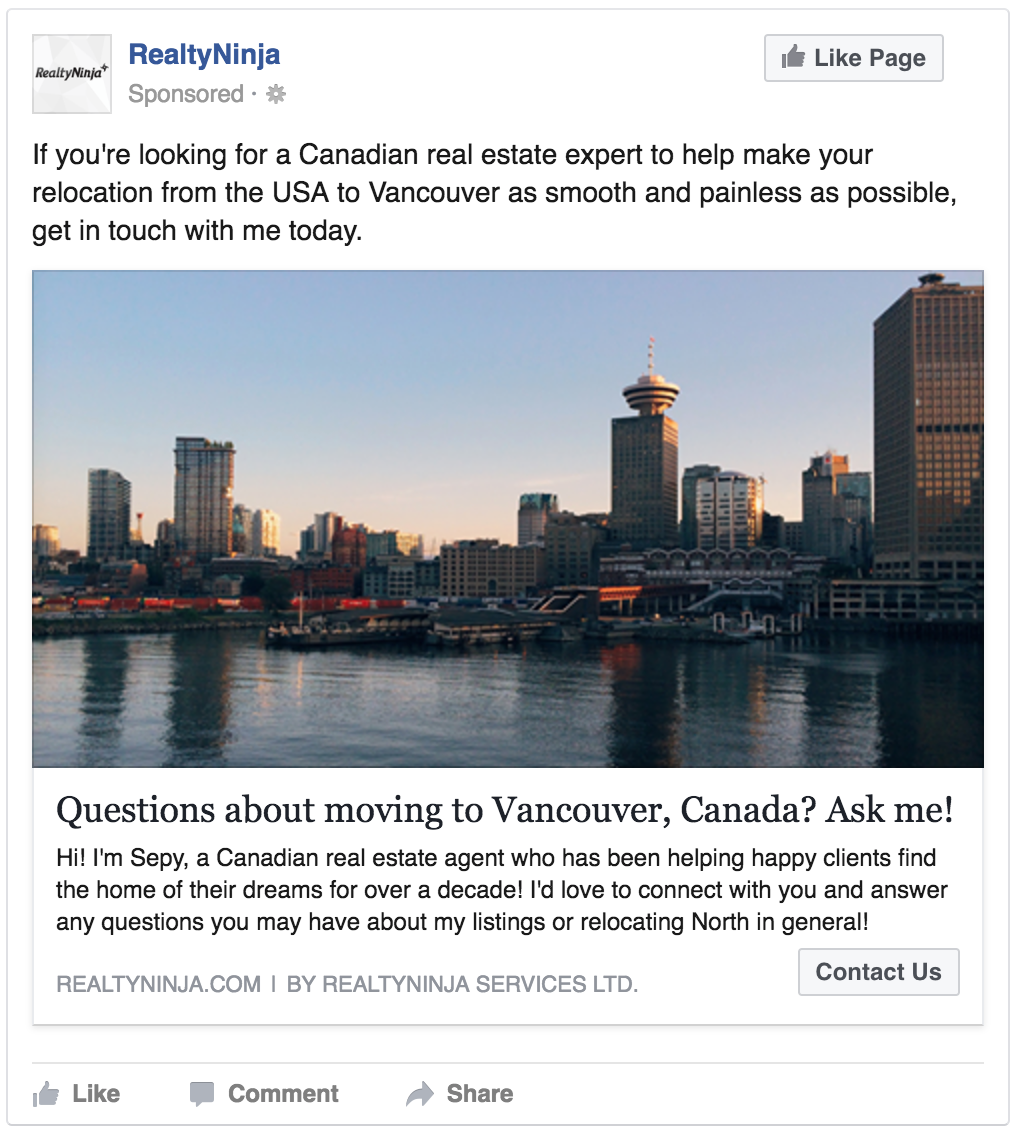During the US Presidential Election this week, the Immigration Canada website crashed due to a traffic surge.
We’re talking thousands or hundreds of thousands of people attempting to access the website during the election. Was it a coincidence or causality?
We don’t think it was coincidence… A few months ago we heard news that Google searches like “Move to Canada” had been seeing massive spikes. In fact the concept of Americans moving to Canada has been alluded to all over popular media in recent months, like in this clip from the Ellen show from March 2016. But on November 9th at around midnight, searches for “Move to Canada,” “Moving to Canada,” and “Immigrate to Canada” spiked again, and harder than ever.
A significant portion of people and families who’ve Googled or spoken of it won’t actually make the move, there will be many that are taking their relocation very seriously. These people already know that emigrating from the USA to Canada isn’t impossible, but it also isn’t an easy or overnight task. There might not be a physical Wall to climb (yet), but it could take some money, some planning, potentially marriage, and definitely some time.
American dudes: I’m single, I have an apartment and a sick record collection, and Vogue just said Winnipeg is cool. #MarryaCanadian
— Bee Green (@benjisays) November 9, 2016
Fast forward a few months or a year, when hopeful American ex-pats have raised the money, made their plans (slash married a Canadian) and enough time has passed. When that time comes, who will represent our southern neighbours in their Canadian real estate transactions?
In this week’s Dojo article, I’m going to explain how you can place your real estate business in front of the right audience in the months leading up to the ‘Northern Migration’. So that when it comes time for them to start considering Canadian real estate, you will be their go-to REALTOR®.
This is not a strategy that might make you leads or money today, tomorrow, or even next month. It might frankly never make you any money (no promises.) With that said, the only way you’re going increase your odds of becoming the relocation REALTOR® of choice with Americans is by starting early and staying consistent.
Note: I’d like to say for the record that us Ninjas are not interested in picking sides or engaging in politics. We’re interested in spotting opportunities in business for ourselves and our awesome customers. The potential business opportunity we’re discussing in this article is based on data and experience, not on personal opinions or emotions.
Use PPC Advertising to Target Americans Moving to Canada
In all cases, the most effective, efficient, and easiest way to reach those looking to migrate to Canada from the US is through PPC advertising. With the advanced targeting available to you now through modern advertising mediums, you can place your listings and a tailored marketing message in front of the right people. In this Dojo article I’m going to recommend Facebook Ads, Instagram Ads and Google AdWords.
The beauty of Facebook Ads Manager is that it’s also where you create your Instagram Ads! Facebook owns Instagram, and has amalgamated their advertising platforms into one. Setting up an Instagram Advertisement is done in the exact same way that you set up a Facebook Ad.
All that’s different is you select “Instagram” as one of your Ad Placements if you’d like your ad to also appear on Instagram. You can create an ad that is exclusively for Instagram, by selecting it as the only Ad Placement. However, you can also select both Instagram and Facebook for Ad Placements, and the same exact ad will appear in both places (if the type of ad you’re creating is available on Instagram that is.)

Before we dive into how to place your ads in front of the right audience, let’s quickly discuss landing pages. Your ads should be directing people to a specific link. You’ll need to identify this link before you can begin thinking about your PPC ad campaign. Here are some suggestions:
- A Niche MLS® Search Page on your website, featuring an area,
- A single-page MLS® powered real estate landing page dedicated to an area,
- A blog post regarding the topic of moving to your area, with links to related home searches,
- A special lead-capture page offering something in exchange for contact info,
- A professional video that relates to “Moving to Canada” (You get extra Ninja points for videos)
Don’t forget the importance of the first bullet. Niche MLS® search pages can feed the exact needs of your audience. For example, 25-30 year old residents of Oregon won’t likely be purchasing a detached house in Vancouver, since it’s 10X more expensive. They would want to look at condos, or the cheaper end of the market. Perhaps Port Moody or Maple Ridge (which are within an hour drive of Vancouver) would suit their needs better. Point is, know the audience you’re targeting and deliver the landing pages they need.
[-_-]~~~ Ninja Tip: Don’t send people who click your ads to your homepage. It’s too general of a landing page, and in 99% of cases your homepage will not address the reason your visitor clicked your advertisement.
Now that you know how to create Instagram and Facebook ads and where to direct them, let’s talk about the targeting options available to you. How you set up the targeting options will dictate the types of personal Facebook & Instagram accounts that’ll receive your advertisement. This is the most crucial component to your ad, so feel free to A/B test different targeting criteria until the data clearly defines the most effective.
The majority of Americans looking to make a move to Canada are those in opposition to a Donald Trump presidency. Whether their stance is justified or not is of little concern to me. I’m interested in this fact because it means the supporters of Trump’s opposition are the most obvious place to start targeting your ads.

Looking at the electoral map above, you can easily spot the states in which Hillary Clinton lead the polls. The dark blue areas area Democrat/Clinton states:
- Washington
- Oregon
- California
- Nevada
- Colorado
- New Mexico
- Hawaii
- Minnesota
- Illinois
- Virginia
- Maryland
- Delaware
- New Jersey
- New York
- Connecticut
- Vermont
- Massachusetts
- Rhode Island
- Maine
These states would be your best bet to get started, but to narrow things down further let’s eliminate some of the non-major states and states with most distance from the Canadian border. I removed 7 states – my updated list looks like this:
- Washington
- Oregon
- California
- Nevada
- Colorado
- Minnesota
- Illinois
- New Jersey
- New York
- Vermont
- Massachusetts
- Maine
Now I’ve boiled my list down to 12, but that’s still a lot of states. At this point I need to decide whether or not I’m going to try targeting all of these locations. Depending on which Canadian province you live and operate your real estate business out of, you may want to narrow your list down further, so that you are only promoting yourself to states closest to your province.
I live in Vancouver and for the sake of this example, I’m going to pretend to be a real estate agent. I would most likely reduce my list even further, focusing more on the west coast. My updated list looks like this:
- Washington
- Oregon
- California
- Nevada
- Colorado
Okay! From 19 down to 5… progress. I’ve decided that these are the 5 states that I dedicate my Facebook & Instagram advertising budget towards. The 5 states that I will promote my relocation services to – your states could be entirely different as you follow along.
In your Facebook Ad Manager, set your “Locations” targeting. (Note: Don’t forget to set the dropdown to people who LIVE in that location, not Everyone – see animation below)

Now that you’ve set your location targeting criteria, it’s time to set your age, gender, and other detailed targeting options. The data from CNN states that Clinton has a supporter lead in 3 categories: African Americans (88%), Latinos (65%) and Millennials ages 18-29 (54%.) We can further deduce that a big chunk of the African American and Latino Clinton supporters are also between 18-29 years old. This gives us a good basis for some further targeting options.
I’m going to set my age range to 24-35, moving the whole range up the scale 6 years. I don’t believe that 18-23 year olds are going to be serious about making a move for a while (if ever.) I’m going to use a mixture of data and my own intuition/experience to guide my targeting. As should you.

You’ll notice that in the animation above, I’ve done two things besides setting my desired age range. I decided to target both men and women, and I’ve added Spanish and English (US) to my language targeting criteria. This is to capture some of the Latino Facebook users in my selected states. You may also decide to target only women with your ad, as Clinton also has majority support of females (54%) according to exit polls.
Now comes the fun stuff. This next targeting component is called “Detailed Targeting” and allows you to narrow your targeting by placing your ads in front of Facebook accounts with specific interests. If you click “Browse” you can search through hundreds of pre-determined categories. However, the real power of this tool comes in the ability to type in specific things (like a product, or a person) and add those to your targeting criteria.
For instance, by scrolling through the “Browse” section, you can target users who are openly “Liberal”, or even “Very Liberal”. However, by typing in “Hillary Clinton,” you can target Facebook users who are interested in Hillary. I’m not suggesting that picking either of those categories are going to be your golden ticket – they seem pretty obvious actually.
I’ve selected a number of different “Detailed Targeting” options that made sense to me, and have posted the animated screenshot below. I’ve chosen these both through the “Browse” function and by typing in specific keywords.

In the example above, you’ll notice that I not only added a bunch of detailed targeting, I also chose to “Exclude” certain interests… you might find this feature useful in designing your own Facebook & Instagram ads.
The next couple of options allow you to set “Connection Targeting” and “Save This Audience.” Leave Connection Targeting alone for these ads – you don’t need to target people connected to your REALTOR® Facebook Page or anything like that. I recommend saving the audience so that you can create future ads with the exact same targeting criteria you’ve set above later on. Saves a lot of time, super ninja move.
Click “Save This Audience,” and a lightbox will appear. In that lightbox it will allow you to Rename your new audience and review it. Once you’ve renamed it from the default name, click Save. Next time you create an ad, you simply click “Use a Saved Audience” at the top of the “Audience” section and select the one you just created.

Now that you’ve set your Audience Targeting criteria, you’re off to set your Ad Placements (as we mentioned earlier on,) your budgets, and then designing your ad. If you have not already linked your Instagram account to your REALTOR® Facebook Page, here’s how you do so. You need to connect them before you can select Instagram as a placement for your ads. Not to worry though, you can always just save the progress of your current ad and come back later.
How much you decide to spend, and how much you choose to bid on link clicks, impressions or engagement is up to you and your budget/strategy. Some decisions can only be made by yourself and your team, but as a rule of thumb, higher bids and deeper pockets generally equals more views and interaction with your PPC campaigns.
With that said, you could also dump a whole bunch of money into a horribly designed ad that is targeted to the wrong audience. This will end up costing you money without earning you results. Hence why targeting is the most important aspect of your ad campaign. The second most important aspect is the ad design.
Again, this is totally up to you and your strategy. You can get creative or stick to the basics – depending on what your brand guidelines permit. In every case though, I would consider tailoring your messaging in a number of ways. Mainly, tailored to the community and surrounding communities you serve, not all of Canada. Inversely, Americans considering making a move are looking at communities, not just Canada as a whole.

New Yorkers are probably going to take the path of least resistance, and move somewhere like Toronto. A mere 9 hour drive or 1.5 hour flight away. When designing ad messaging and visuals for your ads that target New Yorkers, be sure to specify that you can help them move to Toronto, not just to Canada. Remember, big fish, small pond. Don’t try to compete with “Move to Canada” when you can be the star of “Move to Downtown Toronto” or even “Move to Oakville, Toronto.”
Which leads me on to my next point, you don’t necessarily want to target every single state in the same ad.
I identified 5 different Western states that I would be targeting. Rather than going after them all with one ad, I would create 5 different ads with unique messaging catered to each state. One for Oregon, one for Washington, one for Cali, etc. In fact, I would probably even go as far as creating an A/B test for each location. Which means I would be creating 10 different ads; 2 variations for each state.
I just grouped them all together in my example above for the sake of shortening this article a bit. Here’s the example ad that I ended up designing for my campaign. Please don’t copy this exactly, use it more as a reference point.

As far as Google AdWords goes, a lot of the same principles and concepts we’ve discussed above apply, despite the platform and interface being vastly different. The major difference between Google and Facebook/Instagram is that you are stuck with targeting keyword searches and locations, rather than detailed targeting such as interests.
Rather than going through the step by step on Google AdWords, I’ll refer you to an expert. Check out this ultimate step-by-step guide to setting up AdWords campaigns, presented by Neil Patel. Follow along with that piece as you insert your own keyword targeting criteria and maintain your own ad design strategy.
Again, remember the “Big fish, small pond” mentality. Don’t try to compete with the big budgets by targeting popular search terms such as “Move to Canada.” Instead, focus your keyword strategy on your community and surrounding communities.
In my example Google AdWords ads, I might target keyword searches like “Move to Burnaby Canada,” “Relocate to North Vancouver BC,” “How to Move to Whistler Canada,” and the list goes on. Of course, before making any final decisions, I would run my search terms through Google’s convenient Keyword Planner tool to find the perfect long-tail search terms to target.
I’m going to stop myself here. This is a bit too fun of a topic and I feel like you’re probably done with reading – and are hopefully ready to start applying some of these ideas to your own business (or you’re shaking your head thinking all of this is a horrible idea – that’s okay too.)
I honestly have no way of knowing for sure if this is going to be an effective marketing opportunity for you – I only have my intuition and the data. I do know that if I were a Canadian REALTOR®, I would be willing to risk a bit of my marketing budget to test this opportunity. It would be worth the learning alone in my books!
Lastly, let me just say that I don’t pretend to be an authority on US politics (or politics in general.) Therefore, you might find some of the detailed targeting or other targeting criteria I have mentioned in this article to be incorrect. You might be totally right. Take my suggestions not as gospel, simply as a “How To” guide, as the title of the article suggests.
Thank you so much for reading! If you find this useful, we would be eternally grateful for a share. Let me know in the comments if you have any questions or need some help creating an American landing page on your RealtyNinja real estate website.




